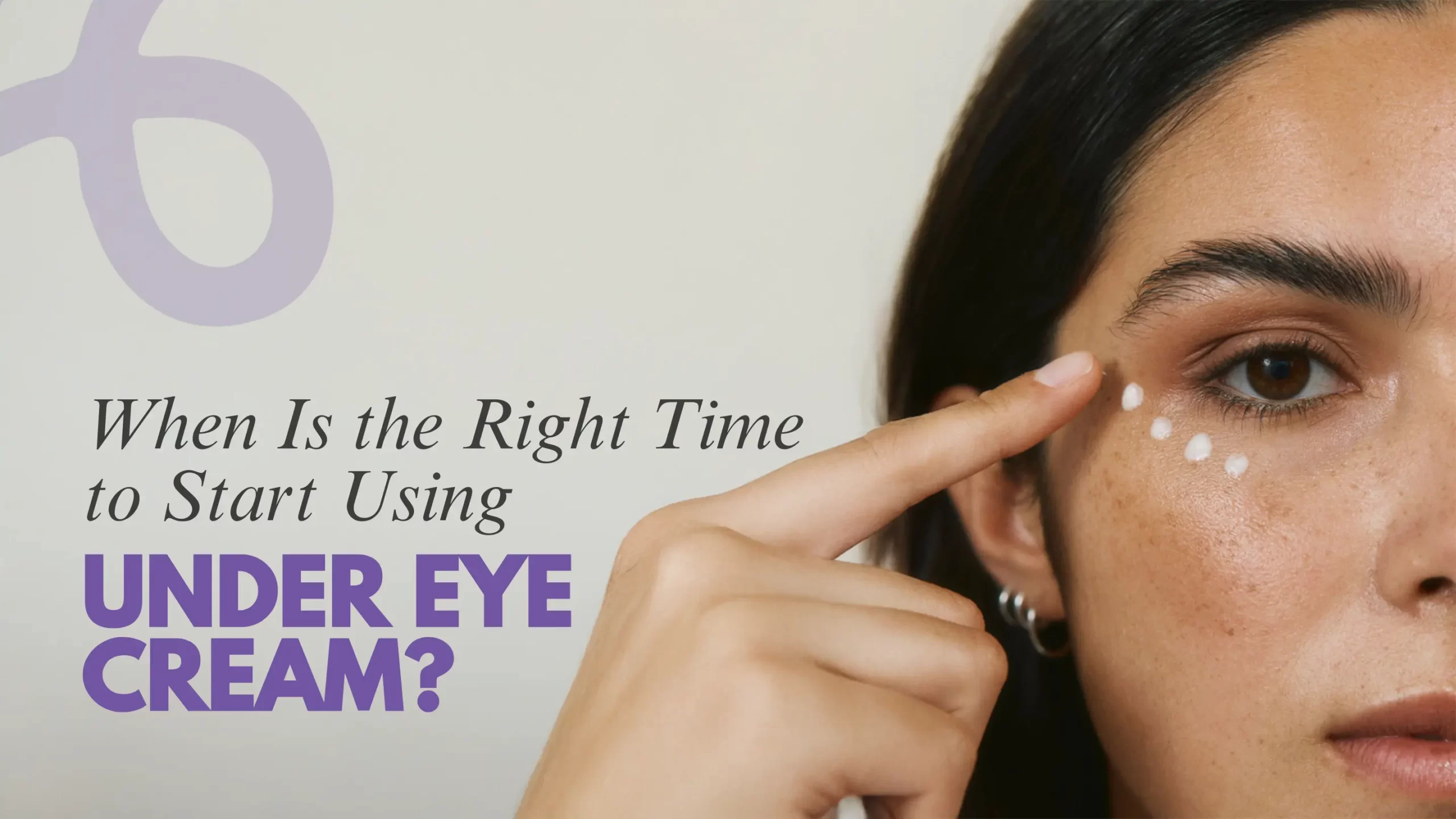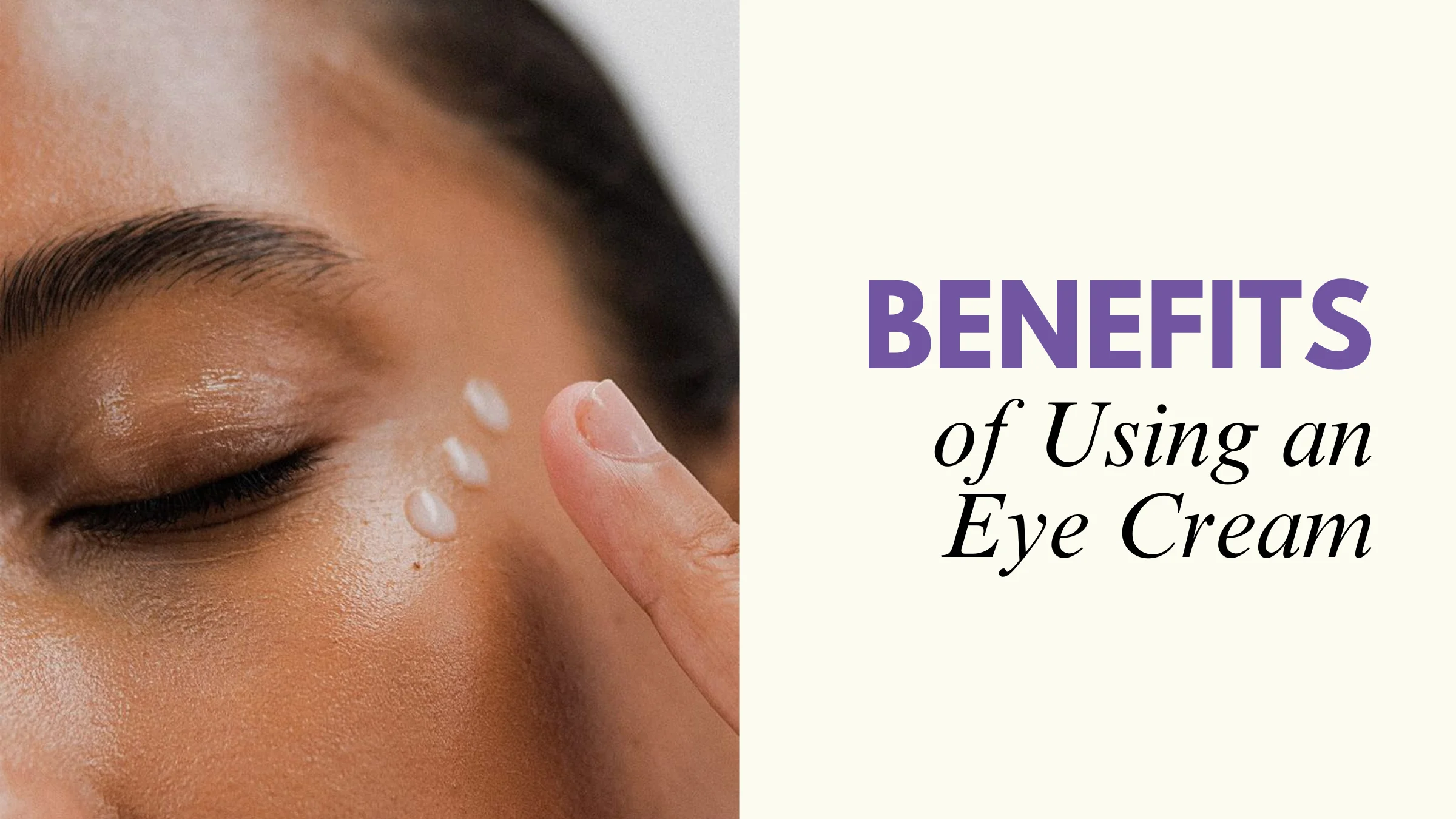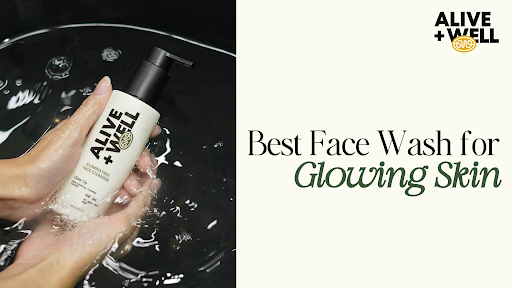When to apply eye cream?
Under-eye skin is one of the most delicate and sensitive areas on your face, making it prone to signs of aging, puffiness, and dark circles. Using an under-eye cream can help address these issues, but when should you start incorporating it into your skincare routine? In this blog, we’ll explore the right time to start using under-eye cream, how to choose the best one for your needs, and common mistakes to avoid.
Signs That Indicate You Need an Under-Eye Cream
Not sure if you need an under-eye cream for dark circles or any other eye-specific products? Here are some signs that may indicate it’s time to add one to your routine:
- Dark Circles: If you notice persistent dark circles around your eyes, it could be a sign of tiredness, dehydration, or aging. The best under-eye cream formulated for dark circles can help lighten and brighten the skin under your eyes.
- Puffy Eyes: If your eyes appear swollen, especially in the mornings, you might have puffy eyes. Using the best eye cream for puffy eyes can reduce swelling and restore your eyes’ youthful appearance.
- Fine Lines and Wrinkles: As we age, the skin under our eyes can lose collagen, leading to bags and wrinkles. A good best under-eye cream for bags and wrinkles will help firm and smooth this area.
- Tired, Dull Eyes: If you constantly look tired, even after a good night’s sleep, an under-eye cream can help rejuvenate and refresh the skin, reducing the signs of fatigue.
What Age Should You Start Using Under-Eye Cream?
The right time to start using under-eye cream varies by age and individual skin concerns. Here’s a guide based on different life stages:
1. Teenage Years (15–19)
In your teenage years, your skin is still in great condition, and most people don’t need under-eye creams for aging or wrinkles. However, if you experience dark circles from lack of sleep or seasonal allergies, a light hydrating eye cream or gel-based moisturizer can be helpful. At this age, focus on staying hydrated and getting enough rest.
2. Early 20s (20–25)
By the time you hit your 20s, you may start noticing a slight increase in puffiness or dark circles due to stress, lack of sleep, or a hectic lifestyle. It’s an ideal time to introduce a light under-eye cream or gel moisturizer into your routine. Look for one with ingredients like caffeine or vitamin C to address dark circles, puffiness, and early signs of fatigue.
3. Mid to Late 20s (25–30)
In your late 20s, your skin’s collagen production starts to slow down. This is when you may notice the first signs of aging, such as fine lines and puffiness. If you haven’t already, now is the perfect time to start using a more targeted under-eye cream that helps prevent future signs of aging. Look for an eye cream with retinol, peptides, or hyaluronic acid to boost collagen and hydration, and reduce puffiness.
4. 30s and Beyond
In your 30s, the skin under your eyes begins to lose more collagen, leading to more noticeable fine lines, wrinkles, and bags. This is when you should invest in a comprehensive under-eye cream to address multiple concerns. The best under-eye cream for bags and wrinkles will have ingredients like retinol, vitamin C, and peptides to rejuvenate the skin and reduce the appearance of dark circles, puffiness, and wrinkles.
Choosing the Right Under-Eye Cream for Your Skin Concerns
When it comes to selecting the best cream for dark circles or any other under-eye issue, it’s crucial to pick a product that targets your specific concern. Here’s what to look for based on your needs:
- For Dark Circles: Look for an under-eye cream for dark circles that contains ingredients like Vitamin C, niacinamide, and caffeine. These ingredients help brighten the under-eye area and reduce pigmentation.
- For Puffiness: If you’re dealing with puffy eyes, opt for an eye cream that includes ingredients like caffeine, which constricts blood vessels and reduces swelling, or peptides that help strengthen the skin.
- For Bags and Wrinkles: If your main concern is bags and wrinkles, choose a formula rich in retinol or peptides. Retinol helps boost collagen production, while peptides firm and tighten the skin around the eyes.
- For Overall Hydration: If your primary concern is hydration, select a lightweight, moisturizing eye cream that includes hyaluronic acid or glycerin to provide moisture and plump up the under-eye area.
Common Mistakes to Avoid When Using Under-Eye Cream
While an under-eye cream can be incredibly effective, there are a few common mistakes people often make that can hinder the results. Avoid these errors to make sure you’re getting the best out of your product:
- Using Too Much Product: A little goes a long way with under-eye creams. Applying too much can cause the cream to sit on top of the skin instead of absorbing, leading to irritation.
- Rubbing the Cream Too Hard: The skin around your eyes is very delicate, so always tap the cream in gently with your ring finger, which exerts the least pressure. Rubbing too harshly can damage the skin.
- Neglecting Consistency: Under-eye creams work best when used regularly. Don’t expect overnight miracles—give it time, and use your cream consistently to see long-term results.
- Not Choosing the Right Formula: Not every under-eye cream is created equal. Make sure you’re choosing a product that addresses your specific needs, whether it’s puffiness, dark circles, or wrinkles. The best under-eye cream will target your individual concerns effectively.
Conclusion
The right time to start using under-eye cream for dark circles or any other skin concerns varies depending on your age and the signs of aging or fatigue you’re experiencing. Whether you’re dealing with puffiness, dark circles, or fine lines, there’s a perfect best eye cream for puffy eyes or best under-eye cream for bags and wrinkles for you. Just remember to choose the right product for your skin type and concerns and use it consistently for the best results.
By taking these steps and avoiding common mistakes, you can ensure that you’re using under-eye cream effectively and giving your delicate under-eye skin the care it deserves.
FAQ
1 Can I Use Under Eye Cream in My Teen Years?
While under-eye creams are not typically necessary for teenagers, if you experience dark circles or puffiness due to factors like lack of sleep or allergies, a hydrating under-eye cream can help. It’s best to choose a gentle, lightweight product.
2 What Are the Key Ingredients to Look for in an Under Eye Cream?
Look for ingredients such as Vitamin C (for brightening dark circles), hyaluronic acid (for hydration), peptides (for firming), and caffeine (to reduce puffiness). These ingredients can target specific under-eye concerns like dark circles, puffiness, and wrinkles.
3 How Do I Know If I Need an Under Eye Cream?
If you notice dark circles, puffiness, fine lines, or sagging skin around your eyes, it might be time to incorporate an under-eye cream. Also, if you’re feeling tired or looking fatigued frequently, a targeted under-eye product can help revitalize this delicate area.
4 Can Under Eye Cream Help with Puffiness?
Yes! If you have puffy eyes, an under-eye cream containing caffeine can help constrict blood vessels, reducing swelling and puffiness. Look for products specifically designed for puffy eyes for the best results.
5 Should I Use Under Eye Cream Before or After Moisturizer?
It’s recommended to apply under-eye cream after your face moisturizer. This allows the cream to penetrate the skin directly and target specific concerns around the eyes without interference from heavier facial creams.
6 How Often Should I Apply Under Eye Cream?
For best results, apply your under-eye cream twice daily—once in the morning and once before bed. Be consistent with your routine to see gradual improvements in dark circles, puffiness, and fine lines.



